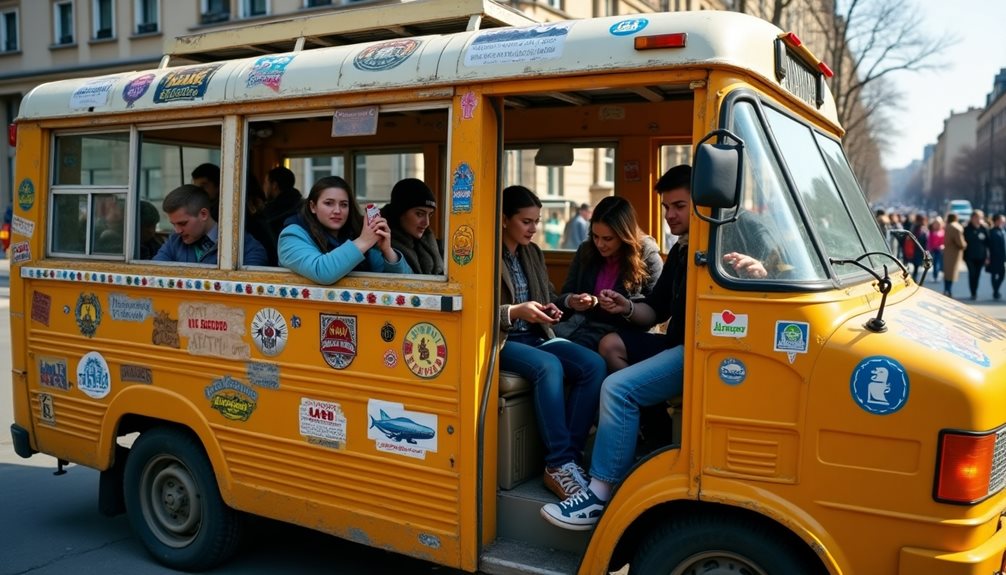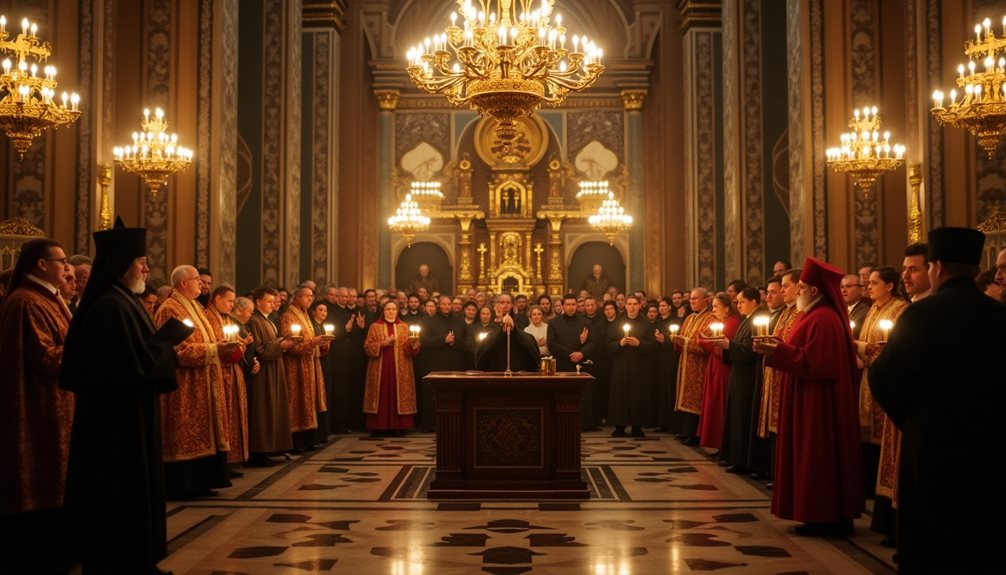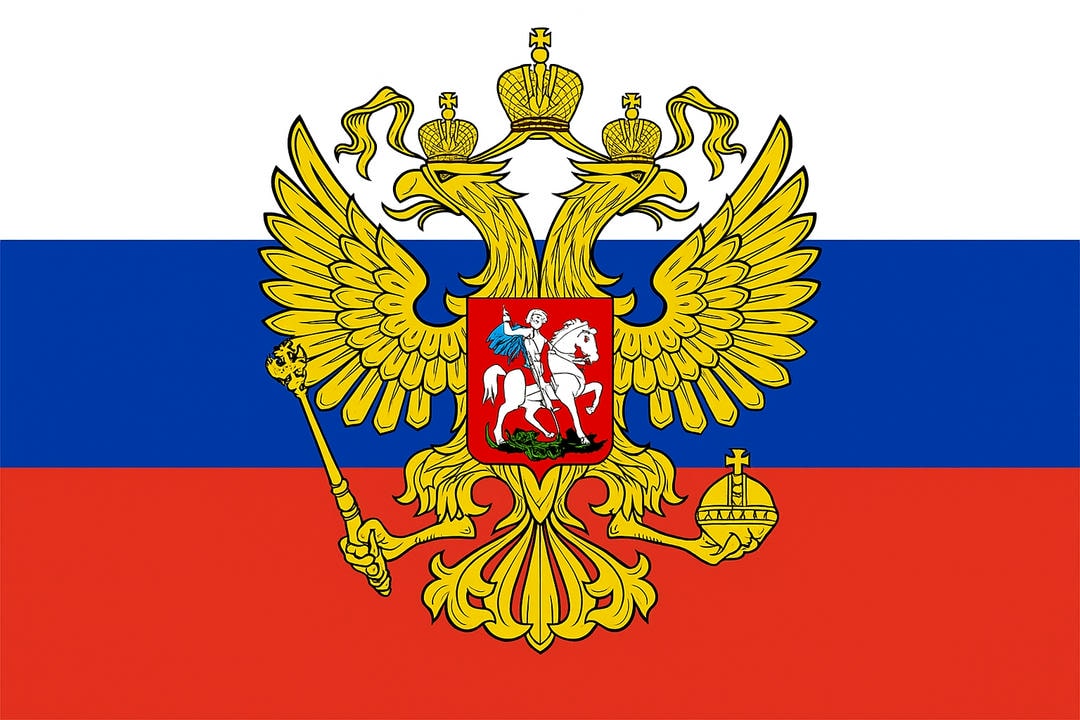Marshrutkas represent a unique facet of Russia’s public transport landscape. These shared minivans traverse fixed routes, yet allow for spontaneous stops. They serve not only as a means of transportation but also as a space for social interaction. Passengers engage in lively exchanges, often sharing humor and local anecdotes. However, the experience can be bewildering for newcomers. What makes these vehicles so integral to urban life? The answer reveals much about Russian culture and community dynamics.
Introduction

Marshrutkas are a fascinating cornerstone of Russia’s public transportation system, blending the convenience of taxis with the affordability of buses to create a truly unique mode of travel. These shared minibuses, operating on fixed routes, are more than just vehicles—they are microcosms of Russian urban life, brimming with cultural nuances and social dynamics.
Unlike traditional buses, marshrutkas can be hailed anywhere along their route, offering passengers a sense of spontaneity and freedom. Inside, the atmosphere is often lively and unpredictable, with animated conversations among passengers and drivers who sometimes share colorful anecdotes that reflect the humor and quirks of Russian culture. This vibrant exchange transforms an ordinary commute into an experience rich with camaraderie and local flavor.
Marshrutkas are not only practical for navigating congested city streets but also serve as windows into the rhythm of everyday life in Russia. Their efficiency and adaptability make them indispensable for urban mobility, while their informal nature fosters a sense of community. For foreigners, riding a marshrutka is more than just transportation—it’s an immersive glimpse into the heartbeat of Russian cities.
These minibuses encapsulate a blend of practicality and personality, where every ride can feel like a small adventure. Whether it’s the driver’s quick wit or the collective spirit of passengers sharing space and stories, marshrutkas embody the essence of Russian urban culture: dynamic, resourceful, and deeply human.
What Is a Marshrutka?
A marshrutka, short for marshrutnoye taksi (literally “routed taxi”), is a shared minibus or van commonly used for public transportation in Russia and many post-Soviet states. The term originates from the Russian word marshrut, meaning “route,” which itself derives from the German Marschroute (“march route”).
Unique Features of Marshrutkas
Unlike traditional buses, marshrutkas operate with remarkable flexibility. They follow fixed routes but can be hailed from almost anywhere along the way, stopping at passenger request. This adaptability makes them a faster and more convenient option compared to buses, while remaining significantly cheaper than taxis.
Passengers pay fares directly to the driver or pass them forward through other riders, creating a communal experience. Departures are often unscheduled, with vehicles leaving only when sufficiently full.
Origins and Evolution
Marshrutkas emerged during the late Soviet era as an innovative solution to gaps in public transportation. They gained popularity in the 1990s amidst economic upheaval, when municipal transport systems struggled to meet demand. Privatization allowed entrepreneurs to establish marshrutka services, which quickly became vital in urban mobility.
Initially informal and unregulated, marshrutkas evolved into a semi-organized system. They adapted to urban needs by providing efficient alternatives to rigid bus schedules, particularly in congested cities.
Beyond their practicality, marshrutkas offer a glimpse into local life. Riders often share anecdotes about quirky drivers and the lively atmosphere inside these minibuses. Overcrowding and unpredictable stops add an element of chaos that has become part of their charm.
For foreigners, marshrutkas serve as both a mode of transport and an immersive cultural experience. They reflect the economic realities, social dynamics, and resourcefulness of post-Soviet urban life.
Why Marshrutkas Thrive
Marshrutkas thrive in cities where traditional public transport systems are insufficient or poorly maintained. Their private ownership model allows operators to adapt quickly to passenger needs, making them indispensable in many regions. However, their informality has also raised concerns about safety, overcrowding, and inconsistent service quality.
In some cities like Moscow and Kazan, efforts have been made to phase out marshrutkas in favor of more regulated systems. Yet in others, they remain an integral part of daily life due to their affordability and efficiency.
Marshrutkas encapsulate the spirit of urban adaptability, blending accessibility with cultural vibrancy. They stand as a testament to how transportation systems can evolve alongside societal needs, offering not just mobility but also a reflection of local identity.
The Payment Ritual
In marshrutkas, the act of paying fares becomes a communal experience, where passengers pass money to the driver through a chain of hands. This trust-based system highlights cultural norms of communal reliance and often sparks humor, as seen in jokes about passing money in a friend’s car. Such practices reveal deeper insights into Russian society, emphasizing communal experiences and the interconnectedness of strangers.
Trust and Community
As passengers settle into their seats, the payment ritual transforms a simple transaction into a quirky social interaction. Riders pass cash along a chain of strangers, fostering trust dynamics as each participant relies on others to ensure their fare reaches the driver. This method of cash handling underscores cultural quirks within Russian society, emphasizing communal experiences and freedom inherent in marshrutka travel.
The marshrutka payment system serves as a microcosm of Russian societal dynamics, showcasing how social interactions thrive on cultural trust and communal responsibility. Passengers engage in informal agreements, often relying on the integrity of those around them, which fosters a unique bond among travelers. This system reflects a deeper understanding of community interdependence, where individuals accept the vulnerability of sharing resources.
The unique payment ritual has inspired a variety of idioms and jokes that reflect cultural nuances surrounding this practice. These humorous quips highlight the chaotic efficiency of the money exchange, illustrating the cultural trust inherent in this informal transport system. Passenger stories capture the essence of marshrutka culture, showcasing how these interactions create a sense of community amid urban life’s frenetic pace.
Marshrutka Drivers
Marshrutka drivers embody a unique blend of multitasking skills, navigating busy streets while managing passenger payments and engaging in phone conversations. This remarkable ability raises questions about their role in urban transport: are they heroes adept at handling chaos or daredevils prioritizing efficiency over safety?
Multitasking Masters
Their driving style often reflects a blend of urgency and bravado, sparking debate among passengers and observers. While steering through chaotic city streets, drivers must handle payments and communicate with passengers, which can become complex, especially when fielding phone calls.
Safety vs. Efficiency
Safety concerns arise from their divided attention, yet many passengers appreciate the efficiency and accessibility marshrutkas provide. This juggling act highlights the drivers’ skills and reflects broader urban transport dynamics, where speed often trumps caution. Despite the risks, marshrutka drivers remain integral to the urban mobility landscape, balancing efficiency with the demands of their role.
Marshrutkas in Pop Culture

Marshrutkas have become a staple in Russian pop culture, often serving as a canvas for humor that reflects the everyday experiences of commuters. Cheeky signs like “10 minutes of fear and you are home” and satirical portrayals in popular TV shows highlight their chaotic yet efficient nature. This blend of humor and practicality underscores the marshrutka’s role as a cultural symbol, resonating with shared public experiences and perceptions.
Humor as Coping Mechanism
Inside the cramped confines of a marshrutka, humor acts as a coping mechanism for passengers navigating urban travel’s chaos. Humorous signs with quirky phrases not only lighten the mood but also reflect shared passenger anecdotes, transforming stressful journeys into collective experiences. These signs invite laughter and camaraderie among strangers, creating a unique atmosphere that reminds us that humor can foster connection and resilience even in the hustle and bustle of city life.
Satire and Social Commentary
Public transport in Russia, particularly marshrutkas, has become a rich source of satirical commentary in TV shows. Comedic sketches feature satirical characters reflecting marshrutka culture’s quirks and idiosyncrasies, highlighting the absurdities of daily commutes. These portrayals serve as cultural commentary, shedding light on social satire that resonates with audiences. Humorous clichés like crowded rides and eccentric drivers exaggerate unique experiences, making them relatable and entertaining. Through laughter, Russian TV shows critique societal norms, using marshrutkas as a lens for broader cultural observations.
Cultural Icon
Marshrutkas embody chaotic efficiency, weaving through congested streets while accommodating diverse passenger dynamics. As a symbol of urban mobility, they reflect a unique cultural identity, where route unpredictability becomes a source of transportation humor. Riders often share anecdotes about quirky drivers and their ability to navigate chaos. This blend of efficiency and charm has solidified marshrutkas’ place in the hearts of many, making them an enduring icon of Russian public transport.
Marshrutka Experience for Visitors
Maneuvering the marshrutka system can be both an adventure and a challenge for foreigners.
Understanding the informal atmosphere and cultural nuances is essential for an enjoyable ride, as these shared minibuses are simultaneously cherished for their convenience and feared for their unpredictability.
To enhance your experience, it’s crucial to know the fare and bus stops. Marshrutkas typically operate on fixed routes, but they can stop anywhere along the way to pick up or drop off passengers. Fares are usually paid in cash, so having small denominations ready is advisable. Familiarity with etiquette rules, such as greeting the driver and finding a seat quickly, can also streamline your journey.
Familiarity with etiquette rules—like greeting the driver and finding a seat quickly—enhances the journey. Understanding common routes can streamline travel, while positive driver interactions can lead to a more enjoyable experience.
While beginning a marshrutka journey, a foreigner quickly discovers the informal atmosphere that characterizes this mode of transport.
Passengers engage in informal interactions, often sharing stories or laughter, fostering a sense of community bonding. This dynamic creates shared experiences that transcend cultural differences, allowing a unique cultural exchange to unfold.
Social norms within the marshrutka environment can appear relaxed, with no rigid protocols governing behavior. Such an ambiance encourages openness and camaraderie among riders, making the marshrutka not just a means of transportation, but a microcosm of everyday Russian life, where connections are formed amidst the bustling journey.
Why do locals hold such a complex relationship with marshrutkas? This love-hate relationship stems from their essential role in urban mobility amidst safety concerns.
While marshrutkas offer a cost-effective alternative to other transport forms, maneuvering their chaotic charm often breeds anxiety. Cultural contrasts emerge as passengers adapt to the informal, sometimes unpredictable environment, which can be both exhilarating and alarming.
Economically, marshrutkas provide livelihoods for many drivers, reinforcing their presence. Local anecdotes abound, highlighting both humorous and harrowing experiences, illustrating the unique connection residents forge with these quirky vehicles, balancing convenience and caution in their daily journeys.
Conclusion
In conclusion, the marshrutka is more than just a mode of transportation; it embodies a vibrant cultural phenomenon that reflects the spirit of Russian society. For foreigners visiting Russia, experiencing a marshrutka ride offers a genuine glimpse into local life, allowing them to grasp the quirks and nuances that define it. By embracing this unconventional mode of travel, visitors can enhance their understanding of the country and its people. Marshrutkas thrive on shared stories and anecdotes, often laced with humor and urban legends, which foster a sense of community among passengers. The lively atmosphere within these minibuses showcases the resilience and creativity of Russian society, weaving together the threads of everyday life. To fully immerse in this unique adventure, foreigners should be prepared for spontaneity and learn a few basic Russian phrases. Ultimately, the marshrutka experience enriches a visit to Russia, transforming transportation into an unforgettable part of one’s travel narrative.




